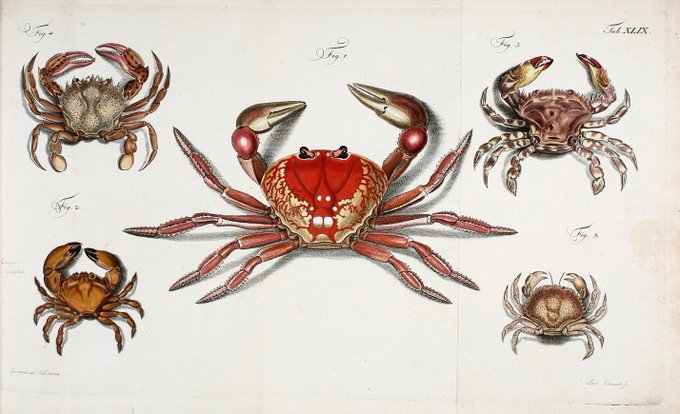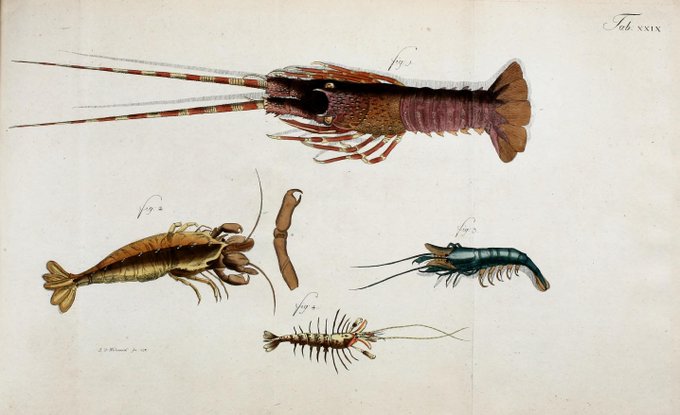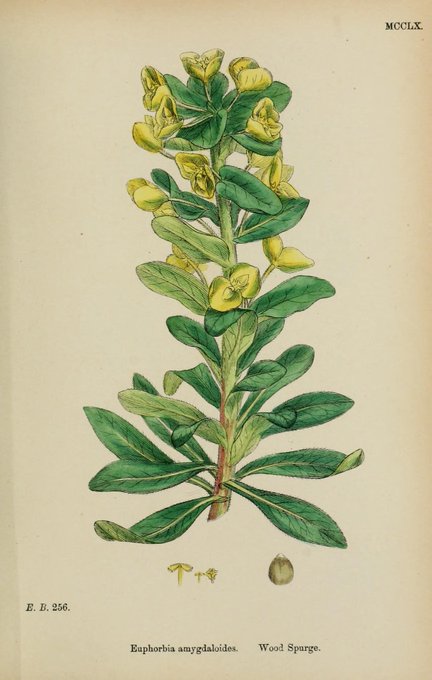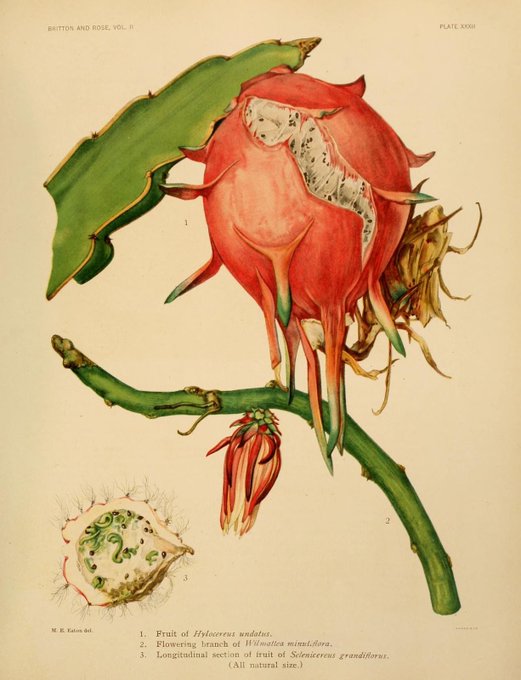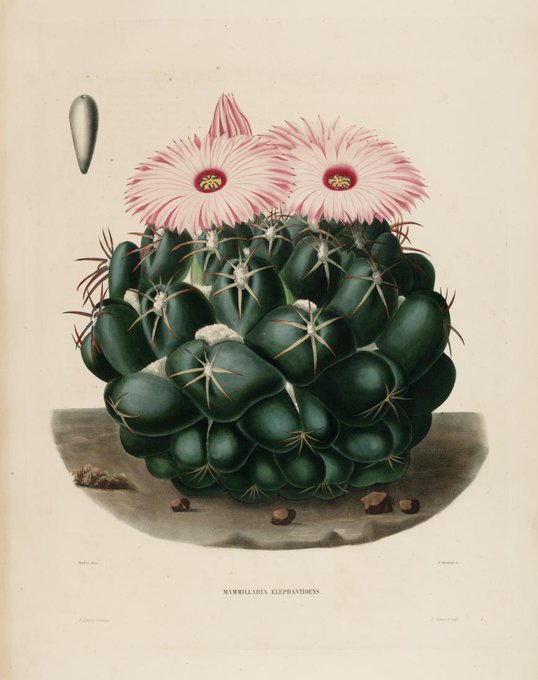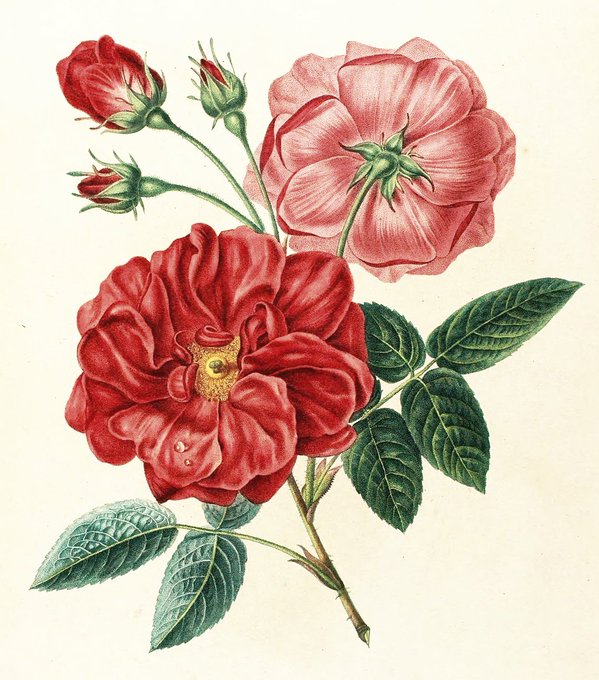BHLibのTwitterイラスト検索結果。 357 件中 3ページ目
"Naturgeschichte der Krabben und Krebse" (1782-1804) is considered one of—if not the—1st comprehensive works on crustaceans. Explore this title, still consulted as a primary source in the field of carcinology today, in #BHLib via @SILibraries ➡️ https://t.co/oZzQmFrq0w 🦀
These lovebirds wish you a happy #ValentinesDay! 💐
The black-winged lovebird (Agapornis taranta) is the largest of the lovebird genus. #SciArt by Henrik Grönvold for "The Avicultural Magazine", v. 16 (1909-10). In #BHLib via @IllinoisLibrary ➡️ https://t.co/L1O2JiPIwR
Frogs from Senegal and The Gambia, published in "Faune de la Sénégambie" (1883-1887), a rare book describing about 700 species of mammals, birds, reptiles, amphibians, and fish. Find the book in #BHLib thanks to @mayrlibrary ➡️ https://t.co/GxPOWeDuXX 🐸
James Sowerby's "English Botany", issued in 267 monthly parts & featuring nearly 2,600 hand-colored engravings, was the most comprehensive, illustrated flora of Great Britain available at the time. 3rd ed. (1863-1886) in #BHLib ➡️ https://t.co/wQPbjzTSrb
#BotanicMonday
@theebillyporter Red carpet looks as flowers: Hailee Steinfeld x Paeonia spp. by Sarah Anne Drake from Edwards's botanical register (vol. 17); via @BioDivLibrary and @mobotgarden Peter H. Raven Library. #BHLib #HerNaturalHistory #SciArtSunday #HistSciArt #Oscars #Oscars2020
Happy bday, Augustin Pyramus de Candolle (born #OTD 1778)! #DYK that Candolle coined the word "taxonomy"?
A work that brought Candolle early recognition was "Plantarum historia succulentarum" (1798-1837). In #BHLib via @mobotgarden ➡️ https://t.co/EfE7BUrDWg #TaxonomyTuesday
All parts of the monks cress (Tropaeolum majus) are edible. You may find this flower as an ornamental ingredient in a salad or stir fry. Watercolor by Deborah Griscom Passmore from her album of American wildflowers, in #BHLib via @USDA_ARS ➡️ https://t.co/M4JbqMmofX
The production of "The British Tunicata" was a 50 year affair. The work commenced between 1855-1860, but many events, including the death of the authors, delayed its publication until 1905-12. Explore all 3 volumes in #BHLib via @MBLWHOILibrary ➡️ https://t.co/82lsPINMf4
#Conchology: The study of mollusk shells. 🐚🐚🐚🐚
Explore beautiful shell #SciArt in "A Conchological Manual" (1839), authored and illustrated by George Brettingham Sowerby II (1812-1884). #OpenAccess in #BHLib thanks to @mayrlibrary ➡️ https://t.co/Nu5RqxVORQ
Aloe vera for #BotanicMonday! This succulent has long been used medicinally, for instance in ointments for minor burns and sunburns. #SciArt by Mary Ann Burnett from "Plantæ utiliores" ([1839]1842-1850), in #BHLib via @FieldMuseum ➡️ https://t.co/0IwTo6H3Kd
#HerNaturalHistory
Happy Bday, Alfred Russel Wallace (born #OTD 1823)! 🎉
Wallace authored one of the most popular books on scientific exploration in the 1800s — "The Malay Archipelago" (1869), detailing his 8 year expedition to Southeast Asia. In #BHLib via @NHM_Library: https://t.co/7vVDUWh0wT
New to @biodivlibrary: Gregory M. Mathews "A supplement to the birds of Norfolk and Lord Howe Islands : to which is added those birds of New Zealand not figured by Buller" (1936). https://t.co/nYxgQo6yA3 Digitised for #BHLib by @museumsvictoria thanks to @atlaslivingaust.
@UTKHerbarium LOTS of great cactus #SciArt from our collection in Flickr ➡️ https://t.co/O3Uvwyqg01
Some of our favorites are those by Mary Emily Eaton from "The Cactaceae", in #BHLib via @NYBG ➡️ https://t.co/YNGVXZ3uDh #FamilyOfTheWeek
"Iconographie descriptive des cactées" (1841-1847), by French botanist Charles Antoine Lemaire, has been described as "the rarest work on cacti ever published." Fewer than 20 copies are known to exist. Find it in #BHLib via @mobotgarden ➡️ https://t.co/NWd3obwDoI #BotanicMonday
"During the cold season these brilliant leaves are in full splendour".
Poinsettia (Euphorbia pulcherrima) from Lena Lowis' "Familiar Indian Flowers" (1878), devoted to plants commonly cultivated in Indian gardens. In #BHLib via @IllinoisLibrary ➡️ https://t.co/gestiJ4823
"These Beautiful Birds dwell in a land where winter never comes." ☀️
This #Feathursday, explore "Beautiful Birds in Far-Off Lands" (1872) by sisters Elizabeth and Mary Kirby, available in #BHLib thanks to @Fisher_Library ➡️ https://t.co/CwRFokA4pF #HerNaturalHistory
The wild arum (Arum maculatum) is widespread across most of Europe, as well as Turkey and the Caucasus. #SciArt by Mary Ann Burnett for her "Plantæ utiliores" ([1839]1842-1850). Explore the work in #BHLib via @FieldMuseum ➡️ https://t.co/U547IjOfEN #HerNaturalHistory
The nasturtium Tropaeolum moritzianum is native to South America. #SciArt drawn & lithographed by C.F. Schmidt for "Icones plantarum rariorum Horti Regii Botanici Berolinensis" (1840-44). Explore this work in #BHLib thanks to @Kew_LAA ➡️ https://t.co/eMjXxWTvov #BotanicMonday
Only a few copies of Buc'hoz's "Le grand jardin de l'univers" (1785-91) are known to exist in institutional libraries. The work is a guide for botanists and amateurs on suggested plants to cultivate.
Explore v. 1 in #BHLib thanks to @NYBG ➡️ https://t.co/J76HNE1vaD 🌸🌺🌼
#Rose de Provins (Rosa gallica) has centuries of representation in French history. #BotanicMonday #SciArt by Henriette Vincent for her "Études de Fleurs et de Fruits" (c. 1820). In #BHLib via the Lenhardt Library of @chicagobotanic ➡️ https://t.co/VyLTef1cdy #HerNaturalHistory


